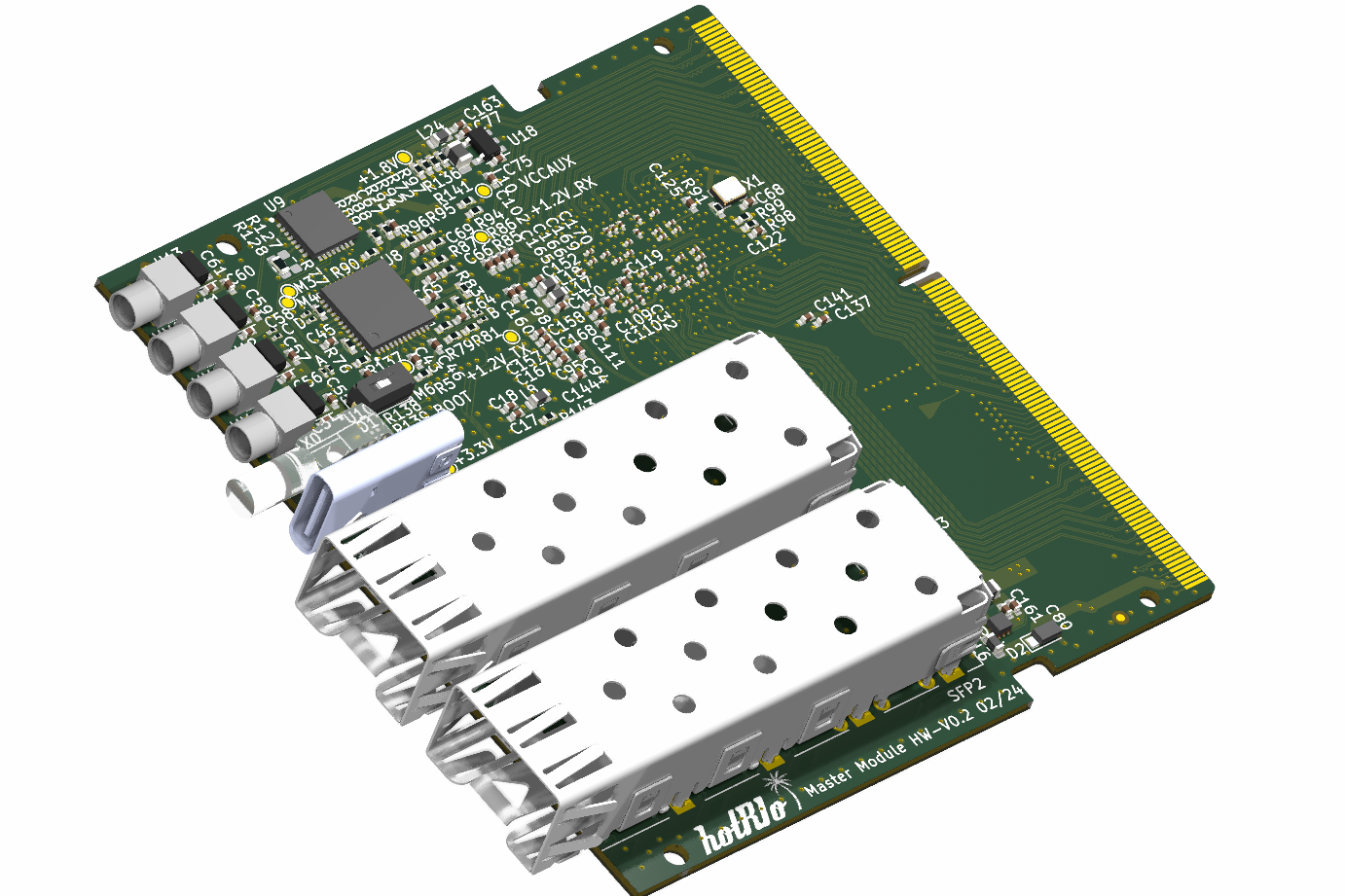HotRIO F-HSC-DDR (DDR module)
Datasheet for this product available here
The HotRIO DDR Module is a compact HotRIO controller board designed for seamless integration into custom electronics or standalone applications. Supplied in a small form factor, it features a DDR4 SODIMM connector, allowing easy interfacing with bespoke hardware or embedded systems.

Key features
Compact form factor for custom applications.
Recommended solution to embed HotRIO-protocol into custom designs.
Standard DDR4 connector interface the FPGA.
Two individual SFP interfaces.
Technical Specifications
Form factor |
66 x 73 mm |
FPGA |
LFE5UM5G-85F |
Interface connector |
SO-DIMM DDR4 |
FPGA interfaces |
64 × LVDS pairs, |
Communication interfaces |
2 × SFP modules (up to 1 Gbps each) |
Clock inputs |
50 MHz internal oscillator, 10 MHz external clock via SMB |
Time sync |
1 × external PPS signal via SMB |
Power supply |
5 V DC through USB or SO-DIMM DDR4 connector |
At its core, the board is built around a Lattice ECP5 LFE5UM5G-85F FPGA, complemented by a dedicated manager microcontroller for board management and configuration. Two SFP ports provide high-speed optical or copper connectivity, enabling the board to operate as either a master or slave on a HotRIO bus, as well as supporting UDP communication.
This board is functionally analogous to the F-HEC-PIR board (codename Piranha), but is specifically tailored for embedded applications where space is limited or where HotRIO capabilities must be added to an existing system without the need for a bulky Eurocard chassis. The HotRIO DDR Module exposes all LVDS pair outputs (both clock-capable and regular pairs) and several LVTTL pins via the DDR connector, making it ideal for hardware developers seeking a flexible and compact HotRIO solution.
By leveraging the DDR4 SODIMM connector, the HotRIO DDR Module enables straightforward integration of custom hardware into the HotRIO ecosystem. Designers can develop bespoke carrier boards or daughtercards that interface directly with the module’s high-speed LVDS pairs and LVTTL signals, allowing for rapid prototyping and deployment of application-specific solutions.
Within a HotRIO system, the DDR Module can function as either a master or slave node. As a master, it allows developers to control and communicate with a network of HotRIO-capable devices, integrating remote I/O seamlessly into their system. Alternatively, when configured as a slave, the board acts as a data provider to an existing HotRIO infrastructure.
This flexibility enables developers to embed custom electronics into the HotRIO ecosystem—either as data producers or as gateways for HotRIO protocol integration. For example, if an existing electronic system requires direct access to multiple HotRIO devices, the DDR Module can be interfaced via a standard SO-DIMM connector, much like a network interface card (NIC). This approach allows rapid expansion of system capabilities, providing straightforward connectivity to HotRIO devices without the need for bulky hardware or complex integration steps.